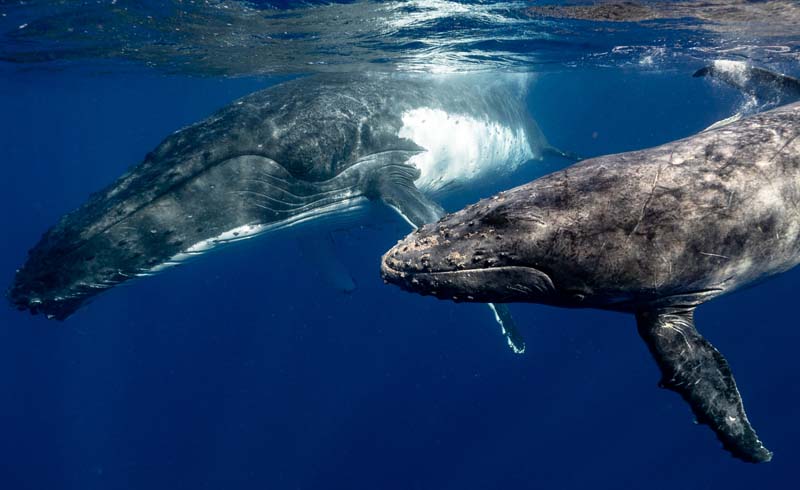Whales are some of the largest animals on the planet, with lengths that can exceed 30 meters and weights that reach up to 200 tons. Each species has its own unique shape and size, and size can vary between males and females. In this article, we will explore how big different whale species can get.
Humpback Whale (Megaptera novaeangliae)
Humpback whales are known for their acrobatic breaches and singing, and are one of the most popular species for whale watching. These whales can grow up to 16 meters in length and weigh up to 36,000 kilograms. Females are generally larger than males, and can measure up to 18 meters in length. Calves measure between 4 and 5 meters in length at birth.
Southern Right Whale (Eubalaena australis)
Southern right whales are one of the largest whale species in the world, and can grow up to 18 meters in length. Adult whales of this species can weigh between 40,000 and 60,000 kilograms, making them one of the heaviest species of whales. Males are usually larger than females. Calves measure around 6 meters in length at birth.
Gray Whale (Eschrichtius robustus)
The gray whale is one of the oldest species of whales, and can grow up to 15 meters in length. Although they are not as large as some of the other whale species, gray whales can weigh up to 36,000 kilograms. Males are typically slightly larger than females. Calves measure between 4 and 5 meters in length at birth.
Blue Whale (Balaenoptera musculus)
The blue whale is the largest species of whale and the largest animal in the world. These whales can grow up to 30 meters in length and weigh up to 173,000 kilograms. Females are usually slightly larger than males. Calves measure around 8 meters in length at birth.
Minke Whale (Balaenoptera acutorostrata)
The minke whale is one of the smallest and most common whale species, and can grow up to 10 meters in length. Although relatively small compared to other whales, minke whales can weigh up to 10,000 kilograms. Males and females have similar sizes. Calves measure around 2.5 meters in length at birth.
In summary, whales are amazing and majestic animals, with sizes ranging from the small minke whale to the gigantic blue whale. The size of whales can vary between males and females, with females generally being slightly larger than males in some species. Additionally, the size of calves varies depending on the species, but generally measures between 2.5 and 8 meters in length at birth.
It is important to note that the size of whales is not only impressive, but also crucial for their survival. Their large size allows them to store large amounts of fat, which they use as energy during long migratory journeys and to survive in the cold waters of the ocean. Additionally, the size of whales is also important for their role in the marine ecosystem, as their large body can harbor a large amount of marine life, such as crustaceans and small fish.





